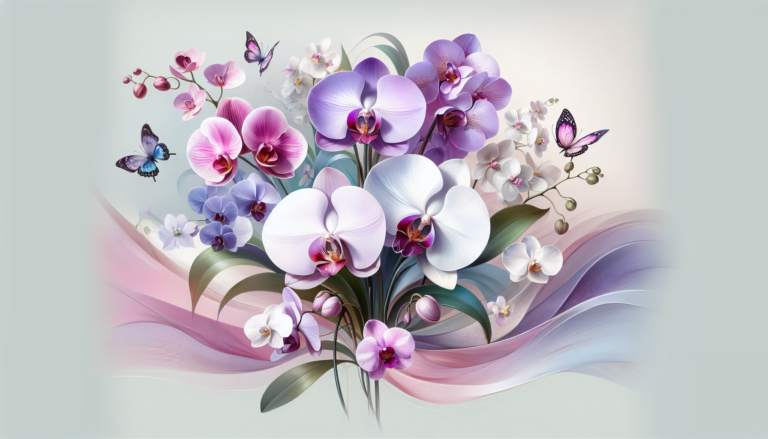Exploring the Symbolism of Seahorses
Seahorses, with their distinctive horse-like heads and curled tails, have captured the imagination of many cultures worldwide. Let’s dive into the fascinating symbolism associated with these remarkable creatures.
Cultural Importance of Seahorses
Asian Symbolism
In traditional Chinese culture, the seahorse is linked to strength and power. The Chinese characters for seahorses translate to “sea dragon,” connecting them to this auspicious symbol. Seahorses are also thought to carry attributes of persistence and fortitude.
Western Symbolism
In Western symbolism, the seahorse represents patience, due to its gentle nature and slow movement through the water. It has become a marine emblem of stability and grounding.
Mythology and Folklore
- Ancient Greeks: Seahorses were associated with Poseidon, the god of the sea, symbolizing the power and majesty of the ocean depths.
- Europe: Some folktales linked seahorses to protection and good luck for sailors.
- China: Chinese folklore viewed seahorses as representing strength, virility, and marital happiness. They were believed to possess medicinal properties.
Symbolic Meanings
- Paternity and Fatherhood: The male seahorse’s role in carrying eggs symbolizes fatherhood and nurturing care.
- Resilience and Adaptation: Seahorses’ ability to camouflage and navigate currents represents resilience and adaptability.
- Good Luck and Protection: Many cultures see seahorses as symbols of good fortune, especially for seafarers.
Conservation Efforts
Sadly, seahorses are threatened by habitat destruction and overfishing. Their cultural significance is intertwined with conservation efforts for protecting marine ecosystems.
Spiritual and Emotional Symbolism
Symbol of Patience and Contentment
Seahorses’ slow, drifting movements through the water have led to their association with patience and contentment. They remind us to move gracefully without the need for speed.
Role in Meditation and Mindfulness
In practices like meditation, the seahorse symbolizes the importance of staying present and calm. It encourages us to anchor ourselves and navigate life’s challenges with grace.
Spiritual Connections
- Transformation and Rebirth: Seahorses’ remarkable transformation during reproduction can symbolize spiritual rebirth and personal growth.
- Intuition and Patience: Their calm demeanor represents qualities like intuition, patience, and trusting life’s unseen currents.
- Connection to the Ocean: As ocean creatures, seahorses can represent a connection to the subconscious mind and the mysteries of the universe.
Emotional Meanings
- Strength and Resilience: Despite their delicate appearance, seahorses possess remarkable strength, symbolizing inner strength and perseverance.
- Harmony and Balance: Their monogamous nature and shared parenting represent harmony, balance, and deep emotional bonds.
- Gentleness and Grace: Seahorses’ gentle movements evoke feelings of peace, tranquility, and navigating life’s challenges with grace.
Modern Interpretations
- Mindfulness and Flow: Seahorses’ ability to move with the current can symbolize the importance of mindfulness and adapting to change with grace.
- Emotional Intelligence: Their attentiveness to partners and the environment can represent emotional intelligence and nurturing connections.
- Following Intuition: Seahorses’ reliance on intuition encourages us to trust our gut feelings and navigate uncertainties with a sense of inner knowing.
By exploring the cultural and spiritual symbolism of seahorses, we gain a deeper appreciation for these remarkable creatures and the valuable lessons they offer us.
Biological Symbolism: A Unique Perspective on Gender Roles
One of the most intriguing aspects of seahorses is their approach to reproduction and parenting. Here’s what makes them truly exceptional:
The Reversal of Roles
- Male Pregnancy: Unlike most animals, male seahorses carry the fertilized eggs in a specialized pouch until birth. This challenges the conventional roles of males and females in reproduction.
- Active Male Role: The male seahorse provides oxygen and nutrients to the developing embryos. This active role in nurturing the young dismantles stereotypes of the passive male.
Evolutionary Advantages
- Protecting Eggs: The male seahorse’s spiny pouch offers a safe haven for the developing eggs, shielding them from predators and harsh ocean currents. This highlights the importance of male protection for offspring survival.
- Increased Reproductive Success: Male seahorses can carry multiple clutches of eggs at once, fertilized by different females. This potentially increases reproductive success for the population, unlike solely relying on sperm production.
Beyond Seahorses
The seahorse’s reproductive system is not the norm in the animal kingdom. However, it highlights the diversity of sex roles across species. In some fish species, females change sex, and in pipefish (a relative of seahorses), some male species also carry eggs.
Challenging Societal Norms
- Redefining Masculinity: The seahorse’s active role in pregnancy and nurturing young challenges traditional notions of masculinity, which often emphasize strength and dominance. It suggests that nurturing and caregiving are not exclusively feminine traits.
- Equality in Parenthood: The seahorse model highlights the possibility of shared parental responsibility, where both males and females contribute significantly to offspring survival.
While the seahorse’s biology may not directly translate to human societies, it encourages us to appreciate the diversity of reproductive strategies in nature and consider a more equitable sharing of parental responsibilities across genders.
Conclusion
Seahorses captivate us not only with their visual appeal but also with their profound and varied symbolic significance. From ancient myths to modern environmental campaigns, these creatures carry a multitude of meanings and serve as powerful symbols across cultures.
They inspire us to be patient, perceptive, steadfast, and resilient – qualities that are increasingly important in today’s world. Additionally, their unique biology offers a fascinating perspective on gender roles and challenges traditional notions of masculinity and femininity.
Sadly, seahorses are threatened by habitat loss and overfishing. Their vulnerability has made them an icon for environmental protection and sustainability efforts, reminding us of the importance of safeguarding our oceans and the delicate balance of marine ecosystems.
As we continue to explore and appreciate the enchanting symbolism of seahorses, let us also strive to protect these extraordinary creatures and their marine habitats for future generations to marvel at their beauty and learn from their symbolic lessons.
FAQ
Is a seahorse a symbol of love?
Seahorses can symbolize love due to their monogamous relationships and shared parenting duties. They mate for life, forming strong bonds and caring for their young together. This devotion and partnership resonate with the concept of lasting love.
Are seahorses good luck?
In some cultures, seahorses are considered symbols of good luck, especially for seafarers and fishermen. This belief might stem from their association with the ocean’s power and their unique ability to navigate challenging currents.
What is the myth of seahorses?
The most well-known myth comes from Greek mythology. Seahorses were associated with Poseidon, the god of the sea, and were seen as his chariot horses, symbolizing the power and majesty of the ocean depths.
What is so special about seahorses?
Several things make seahorses special:
► Unique Anatomy: Their horse-like head on a fish-like body and their upright posture set them apart from other sea creatures.
► Male Pregnancy: Unlike most animals, the male seahorse carries the fertilized eggs in a pouch until birth, a fascinating reversal of typical gender roles in reproduction.
► Monogamy and Partnership: They form strong pair bonds, with both males and females contributing to offspring survival.
What does a seahorse tattoo mean?
The meaning of a seahorse tattoo is personal, but it can draw on the symbolism associated with these creatures, such as:
► Strength and Resilience: Overcoming challenges and navigating life’s currents with grace.
► Fidelity and Partnership: Commitment and devotion in relationships.
► Transformation and Rebirth: Personal growth and embracing change.







